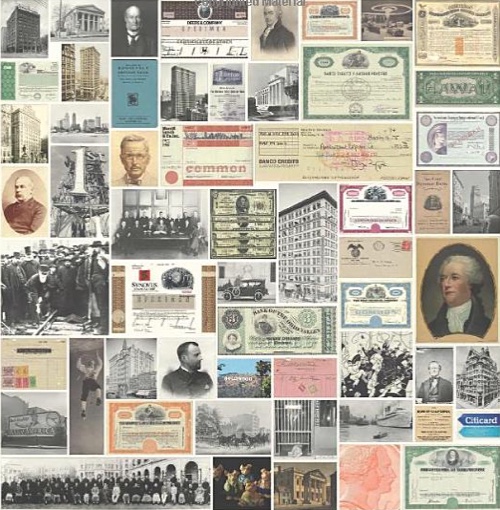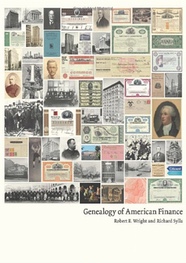Guess What? There Are Truly Great Banks in the US

After the financial debacle of 2008, it became fashionable to bash the nation’s biggest banks and bank holding companies. Much of the criticism regarding the shoddy governance of America’s greatest (biggest) banks was, and remains, well deserved. What most critics failed to mention, however, were the nation’s greatest (best run) banks, institutions with assets in the tens to hundreds of billions of dollars that do well (financially) by doing good (helping others). Yes, such banks do exist and their stories are as an important a part of understanding the financial system as are tales of executive golden parachutes, big short sales, interest rate fixing, terrorist money laundering, government bailouts, and the sundry other sordid sagas that typically dominate newsfeeds.
 With
over $180 billion in assets, one of the biggest of America’s great
banks is BB&T of Winston Salem, North Carolina. Unlike most
financial institutions today, BB&T keeps close tabs on its own
history to help keep it on the right path, which according to its
former CEO John A. Allison is one of justice, integrity, and
stewardship. The bank’s goal, he says, is to “make the world a
better place to live” and the institution’s policies and actions
show that his claim is not mere cant or rhetorical flourish. One of
BB&T’s lineages, which arose from the ashes of Old Dixie,
survived the Great Depression because its customers were too loyal to
pull out their deposits and the bank’s employees and officers took
pay cuts even as the volume of business they daily transacted
increased
because all of the nearby banks foundered during recurrent bank runs.
With
over $180 billion in assets, one of the biggest of America’s great
banks is BB&T of Winston Salem, North Carolina. Unlike most
financial institutions today, BB&T keeps close tabs on its own
history to help keep it on the right path, which according to its
former CEO John A. Allison is one of justice, integrity, and
stewardship. The bank’s goal, he says, is to “make the world a
better place to live” and the institution’s policies and actions
show that his claim is not mere cant or rhetorical flourish. One of
BB&T’s lineages, which arose from the ashes of Old Dixie,
survived the Great Depression because its customers were too loyal to
pull out their deposits and the bank’s employees and officers took
pay cuts even as the volume of business they daily transacted
increased
because all of the nearby banks foundered during recurrent bank runs.
Though numerous, subsequent mergers and acquisitions did not dilute BB&T’s fiscally conservative orientation. Even as its asset base ballooned from $4.5 billion to $136.5 billion during Allison’s tenure, BB&T remained in the top ten percent of American banks in terms of profitability, efficiency, and credit quality. During the mortgage crisis, the federal government forced it to participate in the Troubled Asset Relief Program (TARP bailout). BB&T completely repaid the bailout funds in June 2009, one of the first institutions to do so.
Another great bank, with assets of about $50 billion, is New York Community Bancorp of Westbury, New York. The institution began life in 1859 as the Queens County Savings Bank, a mutual owned by its depositors and run by 40 trustees. Like other early savings banks, the institution’s main mission was to encourage poor people to save for the proverbial rainy day. By 1959, when about 177,000 depositors kept over $212 million in the institution, the bank prided itself on making homeownership more affordable. Later, it specialized in mortgages on low to moderate income apartment buildings in the New York metropolitan area and hence it missed the worst of the Savings and Loans crisis that laid most of its peers low. It gave up its mutual ownership structure by selling shares in an IPO in 1994. In 2000, it changed its name and headquarters and began acquiring smaller banks. The bank ran into some trouble in 2004 but, ironically, that bump in the road helped to keep it relatively free of the subprime mortgage fiasco. Like other great banks, New York Community Bancorp bought up weaker institutions during the financial crisis of 2008-9.
Another of the nation’s great banks not only began as a mutual, it remains one to this day. USAA is best known for auto insurance and its tag line “We know what it means to serve,” but it also supplies members of America’s military community with banking services. It started in 1922 when some Army officers stationed in Texas found it difficult to insure their automobiles with traditional insurers. By 1970, USAA had grown into a global organization with assets of some $250 million owned jointly by its 725,000 or so members. With its policies initially available only to active military officers, USAA came to control 95 percent of that market and hence it gradually expanded membership to include enlisted and retired service personnel and their families. USAA could achieve such unbelievable market penetration because its premiums were generally the lowest available yet its level of claims service was without peer. After a typhoon wrecked a U.S. military base in the Pacific Ocean in 1976, for example, USAA processed 1,100 claims in just two weeks, well ahead of other insurers. USAA’s customer service remains so good that 98 percent of its customers renew their policies annually. Low cost and high quality also describe its USAA Federal Savings Bank, which Money magazine proclaimed the “Best Bank in America” in 1995. Unsurprisingly, USAA was not implicated in the financial crisis of 2008 while one of the giants of the insurance industry needed tens of billions of dollars in taxpayer funds to remain afloat.
The stories of BB&T, New York Community, and USAA are not unusual. America is chock full of great banks, institutions that are small only compared to the trillion dollar plus behemoths that emerged over the final decades of the twentieth century as branching restrictions were slowly rolled back, first by states, then by interstate consortia, and finally by the federal government. The nation’s greatest banks are not flawless but they get the job done without endangering the global economy or republican institutions. They include BancWest, BOK Financial, City National, Comerica, Fifth Third Bancorp, First Niagara, Hudson City Bancorp, Huntington Bancshares, KeyCorp, M&T Bank, PNC Financial Services, People’s United Financial, Popular, SunTrust Banks, Synovus, and Zions Bancorporation. Chances are, one of these can be found in your town, if not your neighborhood. (Keep in mind that they may operate under various local or regional brands.) If not, several foreign-owned banks of high quality and integrity, including BMO Financial, Rabobank, TD Bank, and MUFG, may have accessible branches (again bearing in mind that they are complex entities that operate under a variety of names).